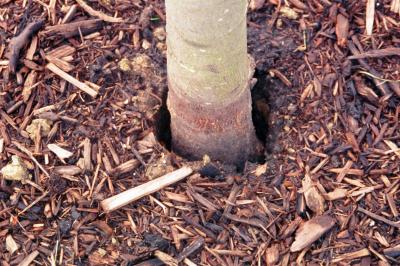FOR IMMEDIATE RELEASE
URBANA, Ill. – If you missed the spring planting window for your favorite tree, shrub, or evergreen, do not despair. Summer planting can be done with some extra care at planting time and the weeks following. Container-grown plants have the greatest flexibility of planting times since all the roots that the plant has are contained in the pot. Balled and burlapped trees, shrubs, and evergreens that were dug for the spring planting season are also suitable for planting. The plants can begin to establish themselves in the yard before the fall planting season gets here and long before cold weather sets in for the winter.
If you are planting a flowering ornamental like crabapple, serviceberry, or another favorite bloomer, you can expect to see blooms this year (if it is not too late) since the flower buds were already on the tree for 2019. That may not be the case for 2020. The tree will be directing all resources to establishing a strong root system instead of creating flower buds. Once the root system “catches up,” flower bud production will resume. This is exactly what happens when planting fruits trees, too.
University of Illinois Extension horticulture educator Richard Hentschel reminds gardeners that a lack of flowering buds doesn’t necessarily mean that something is wrong. While shade trees also bloom, the flower is insignificant and the lack of blooms in the planting year often goes unnoticed.
Proper planting will help ensure your trees, shrubs, and evergreens make it through their first winter in your home landscape. Trees should last many decades, while foundation-sized shrubs and evergreens should have a lifetime of 12-15 years before needing to be replaced. Needled evergreen trees should last for decades as well. Research done by the green industry suggests that if properly planted, shade and evergreen trees will easily be there for future generations.
The hole dug should be 2-3 times the width of the container or soil ball at the top 1/3 of the hole, but does not have to be that wide at the base of the container or soil ball at the bottom of the hole. The extra width at the top ensures the feeder root system can expand easily and establish quickly. Do not over-amend the soil you will be using to backfill around the container or soil ball. Strong textural differences make it hard for the roots to leave the container soil or root ball and move out into the surrounding soil.
Next, Hentschel says, be sure the container or root ball is not too deep when put into the hole. Research evidence suggests roots can grow down into the soil to the correct levels, but cannot move upwards very quickly. That can delay proper establishment.
With container-grown trees, the root-flair area can easily be seen. The flair should be at or slightly above the soil line when planted. That same root flair is there on a balled and burlapped tree, but can be harder to see. If in question, plant a balled and burlapped tree a little higher by an inch or two to ensure the tree is not planted too deep. It is best to identify the root flair before you dig the hole so it is no deeper than necessary.
The biggest difference in spring and fall planting compared to summer is the critical need to manage the watering for a summer planting. Water the plants well at planting time and check for soil moisture in the container or root ball area in about 5-7 days (sooner for containers, later for soil balls) to be sure soil moisture is adequate. After that, Hentschel says, check every few days, knowing that watering is all weather-dependent. Hot, dry air will pull more water out of the plant. The only water available to new plants is when you water at the base of the plant and within the planting hole. The plant will not be able to reach out any further until new roots are created.
Source/news writer: Richard Hentschel, 630-584-6166, hentsche@illinois.edu
Source: Richard Hentschel, Extension Educator, Horticulture, hentsche@illinois.edu
Pull date: May 12, 2020
